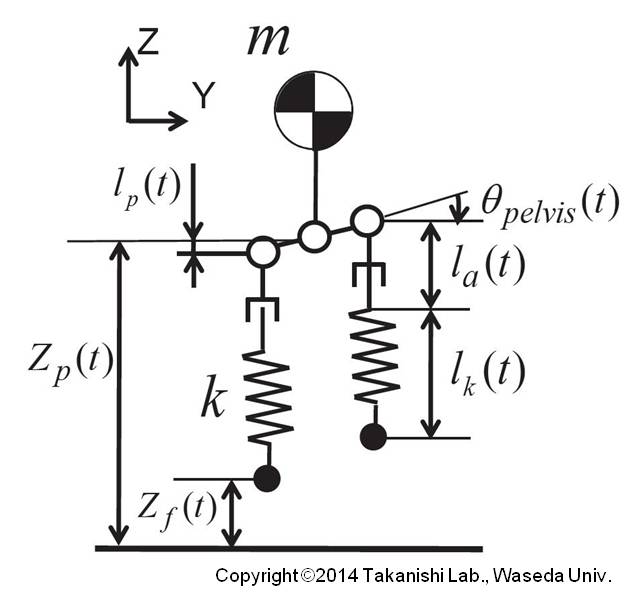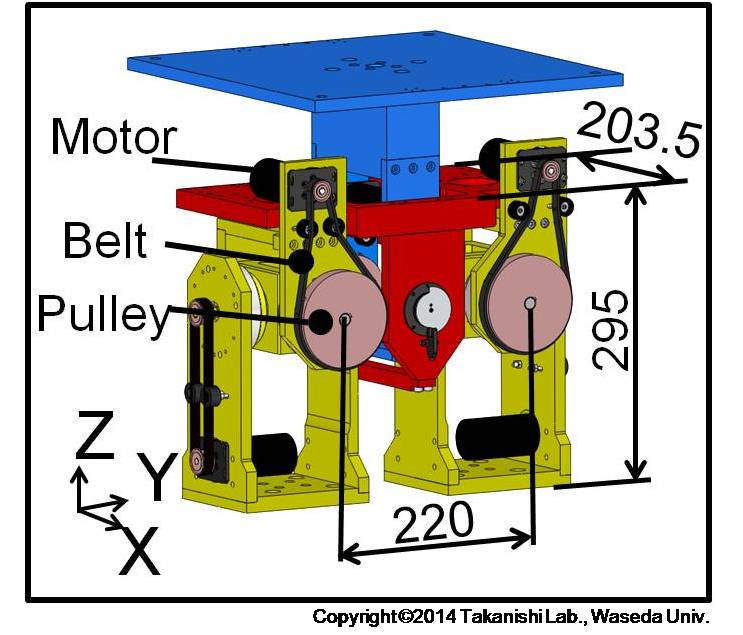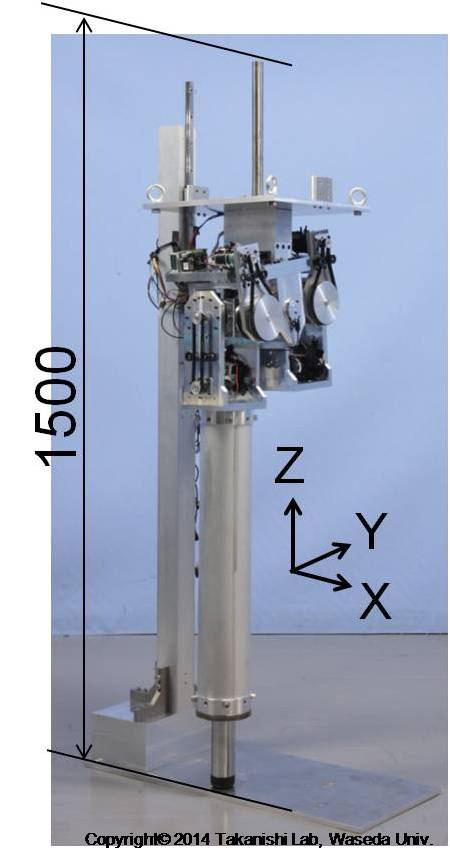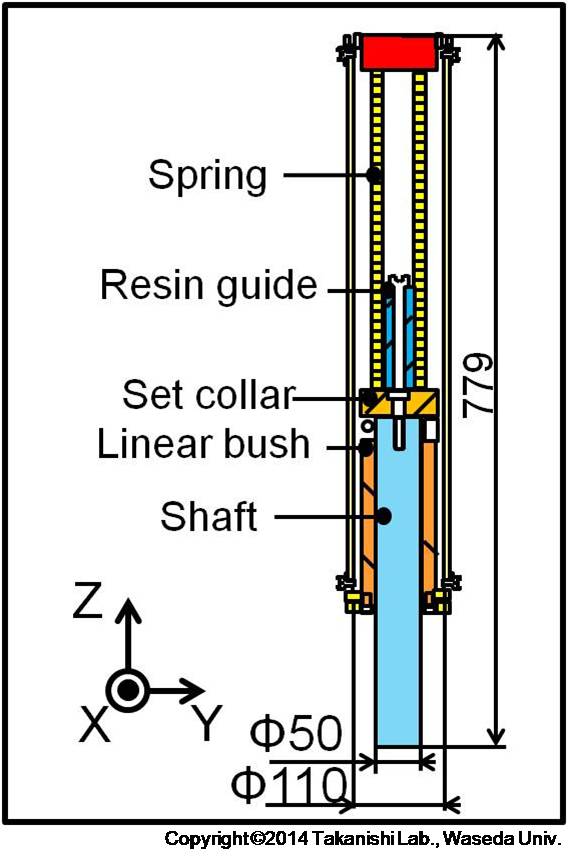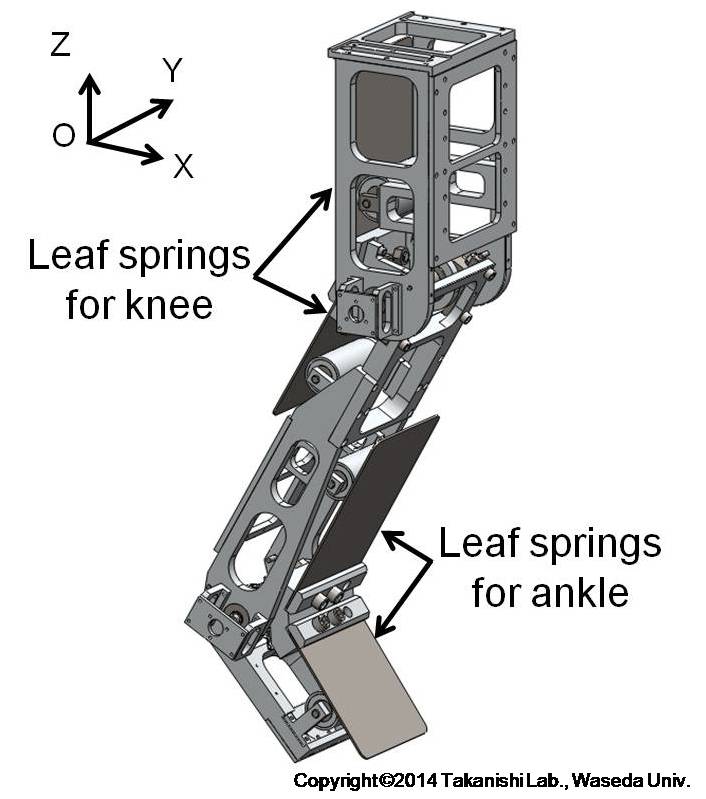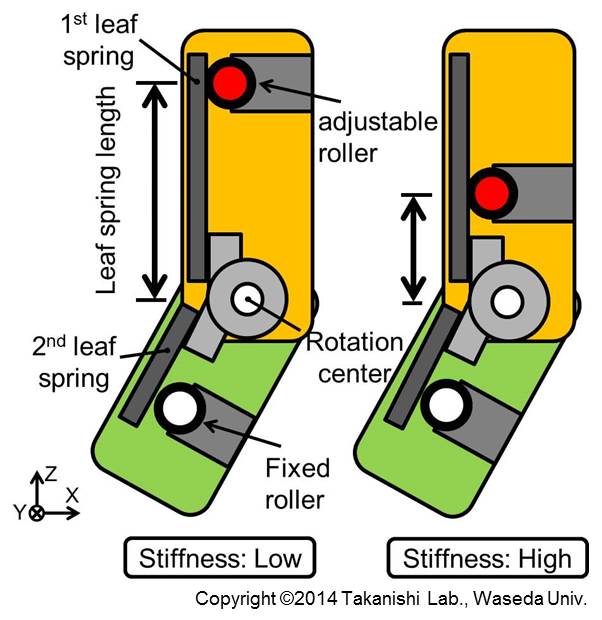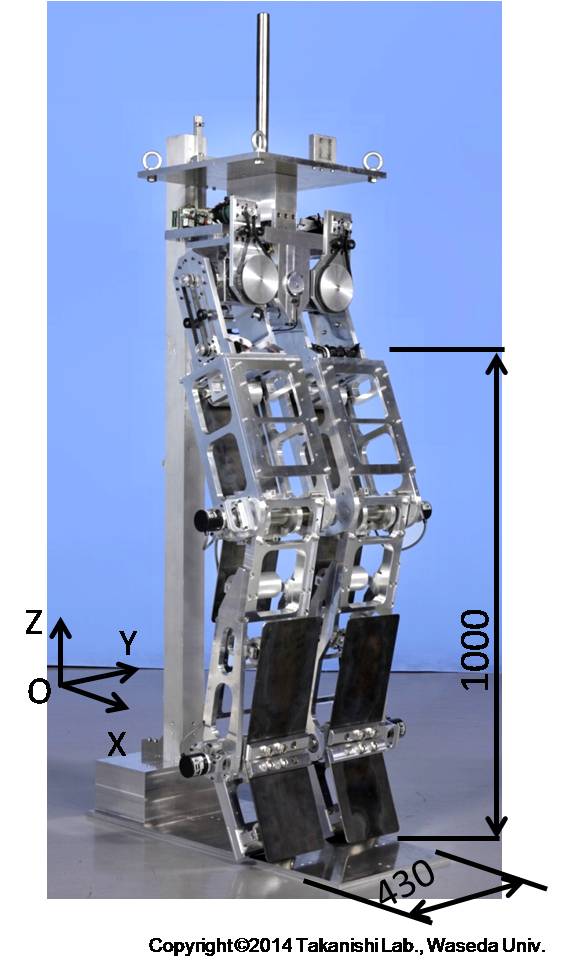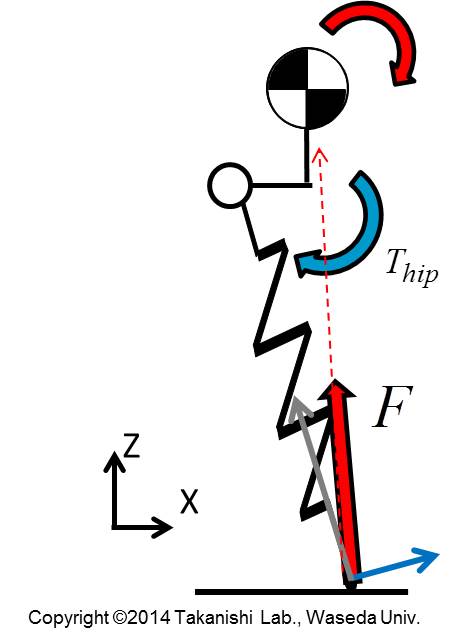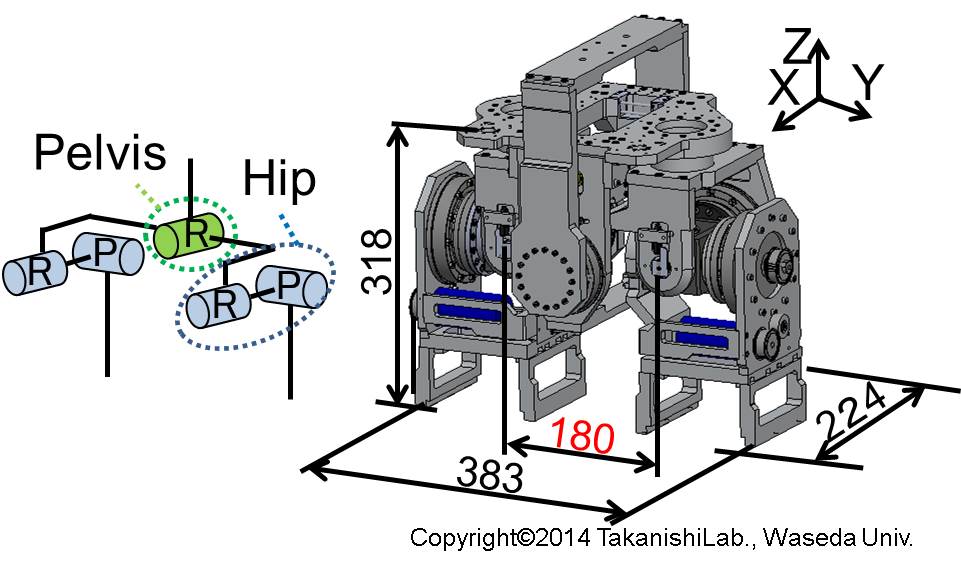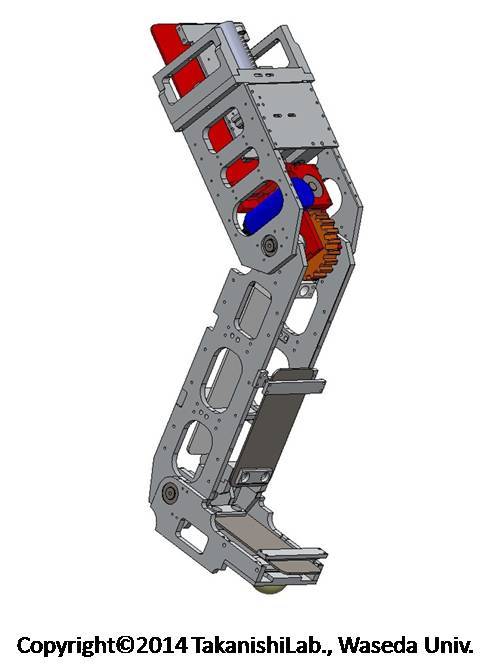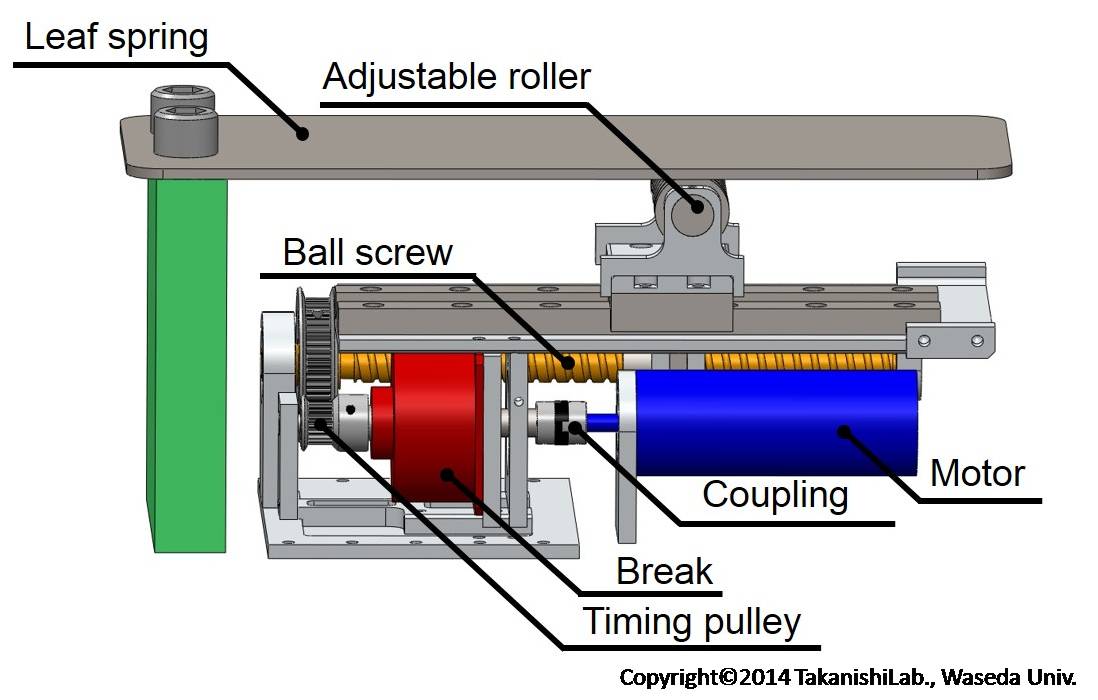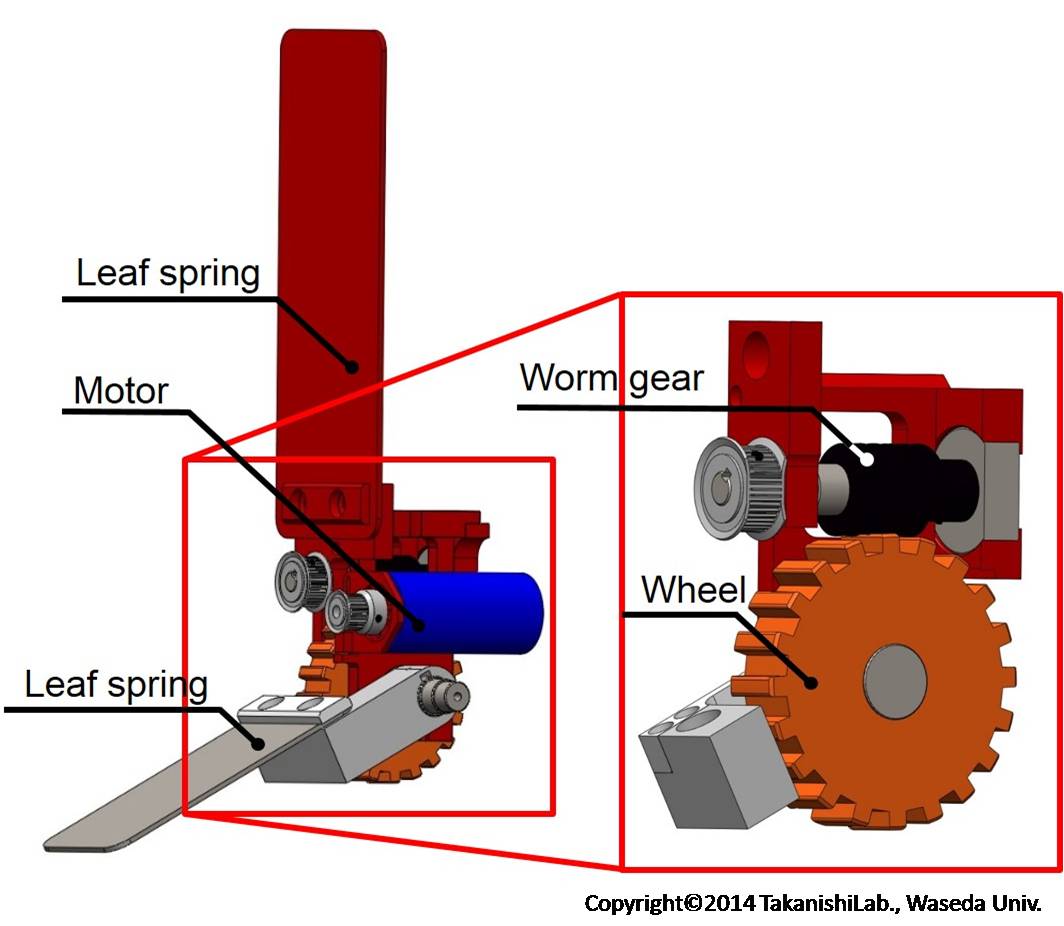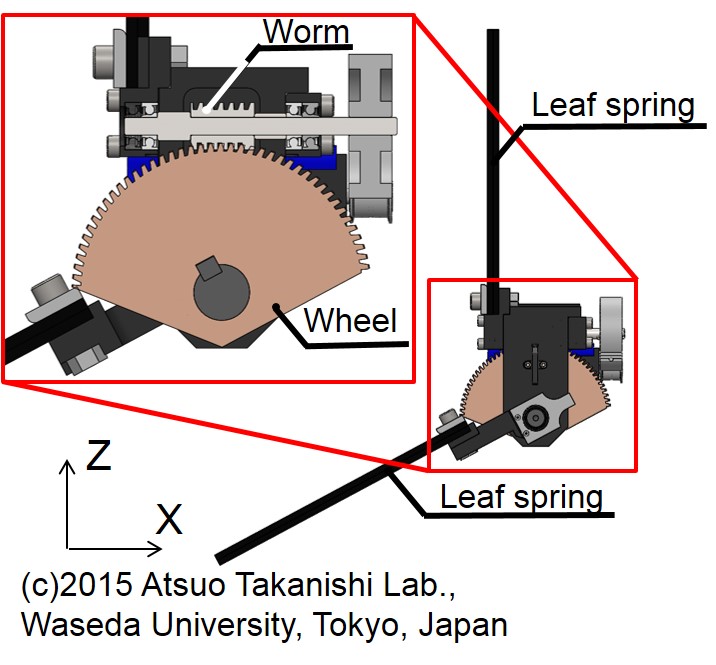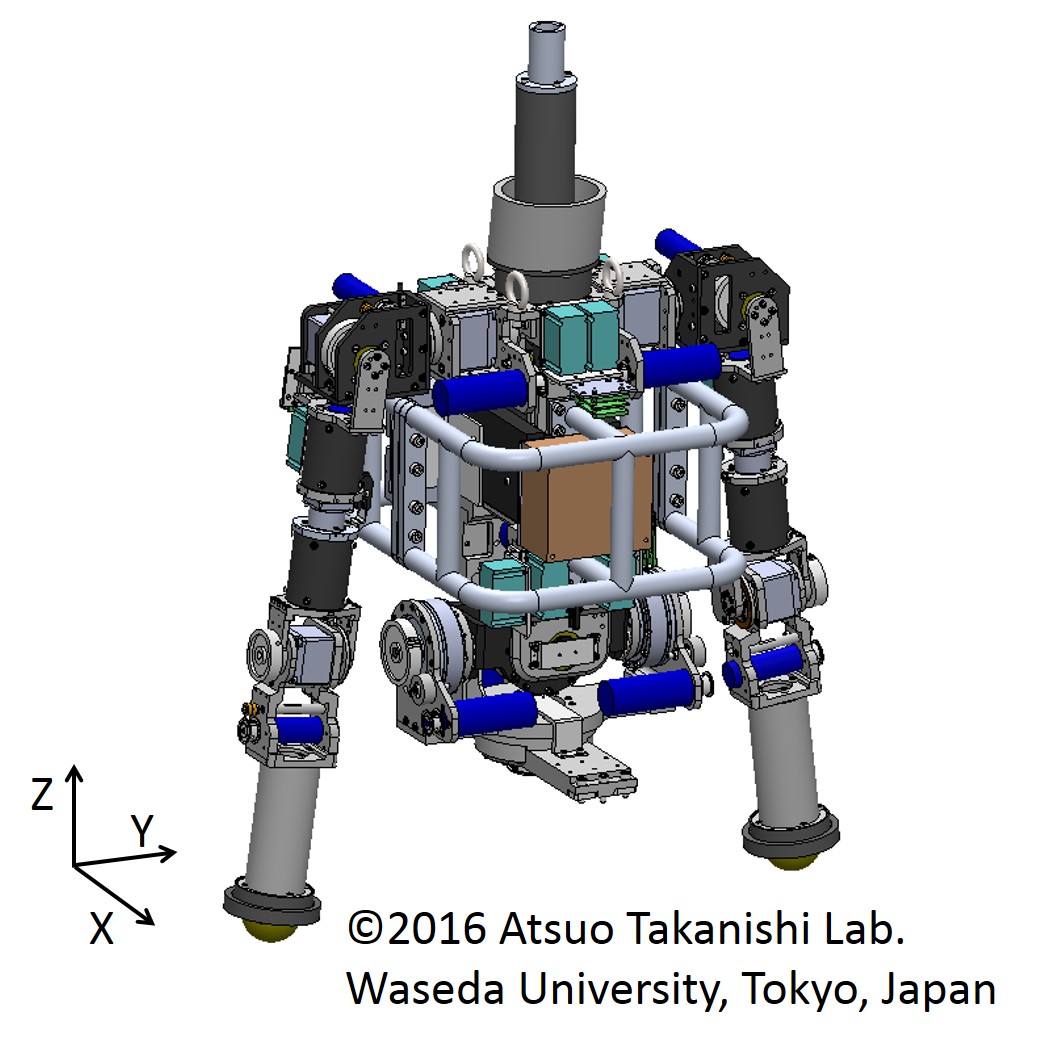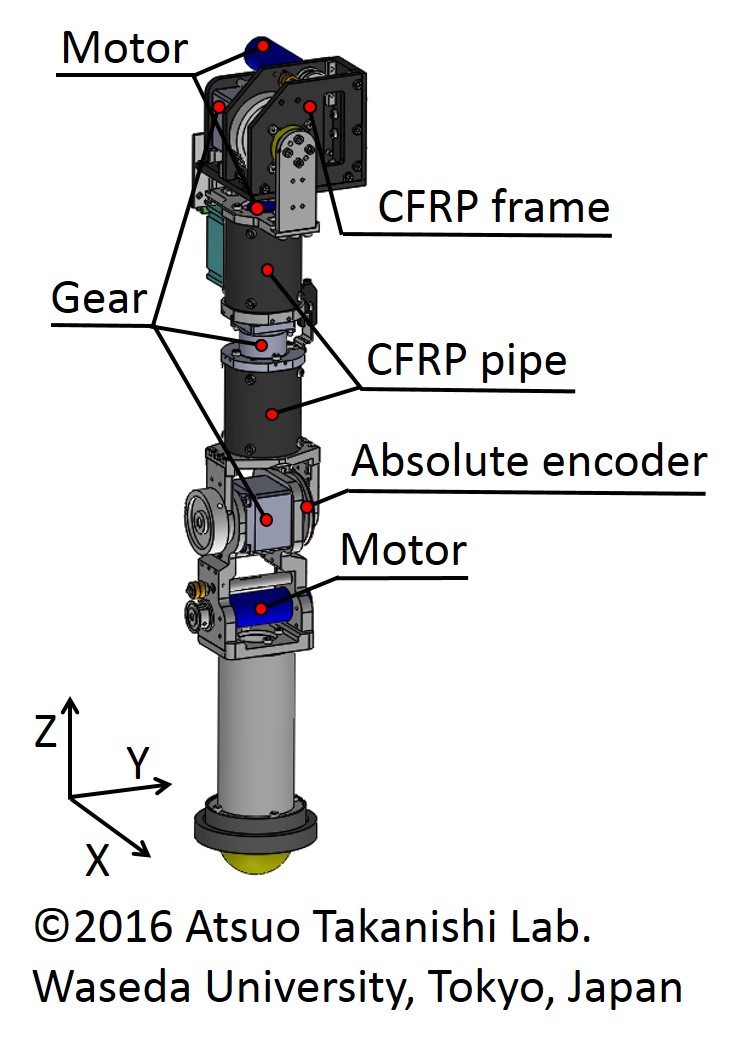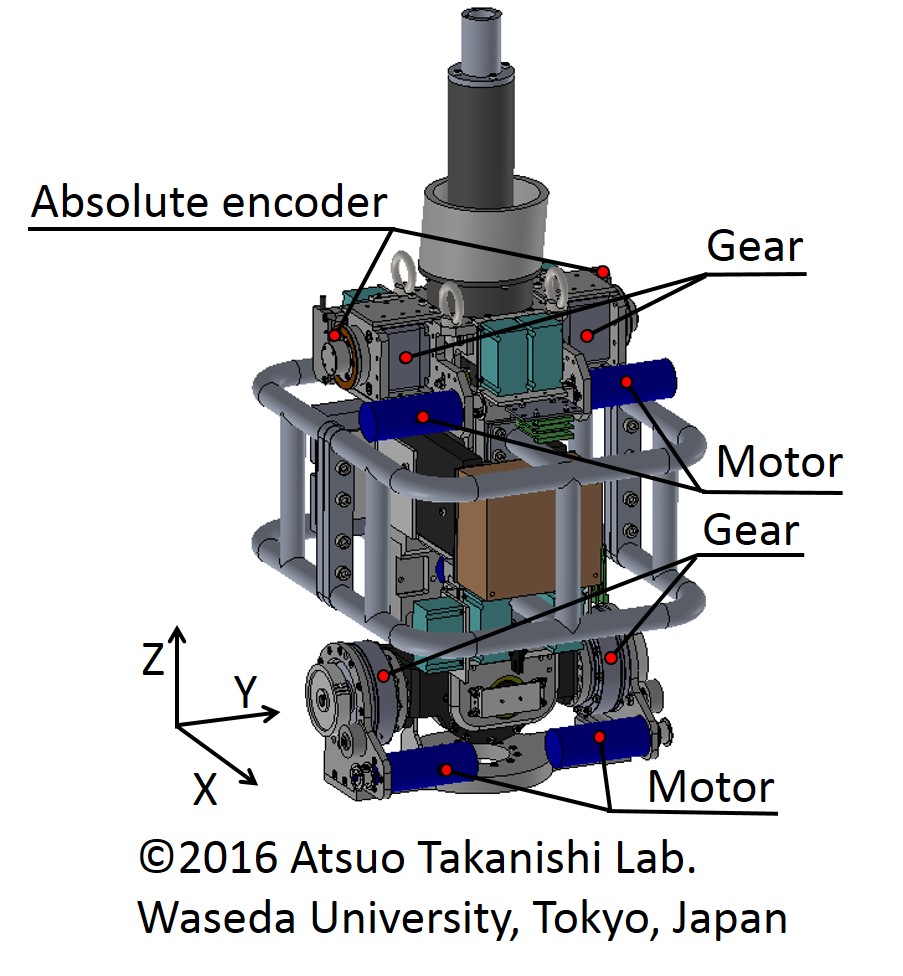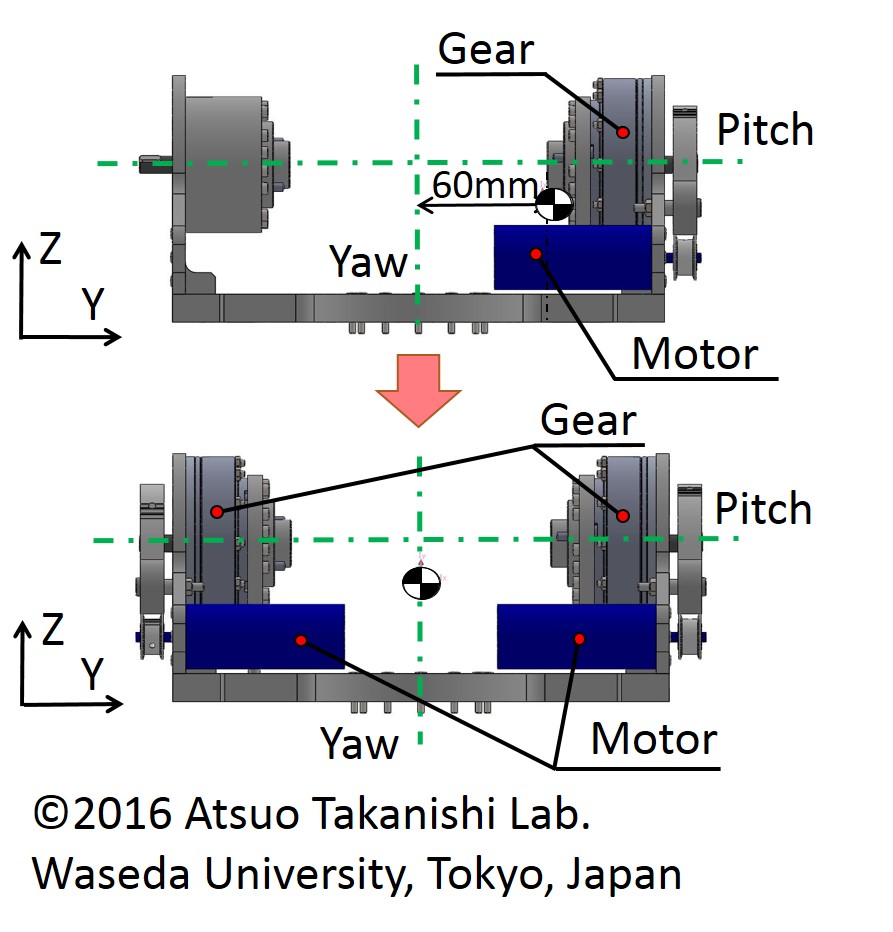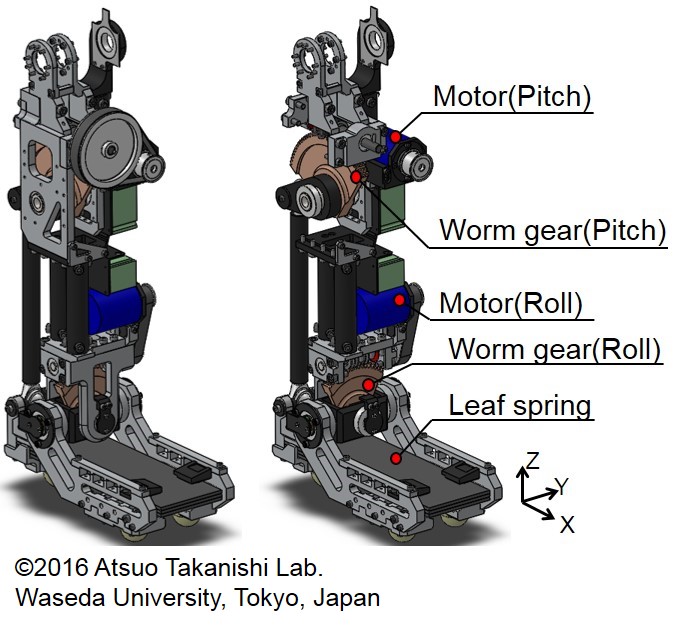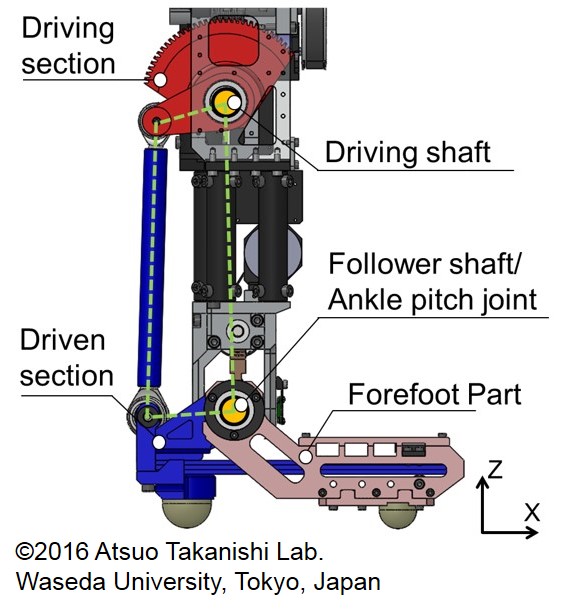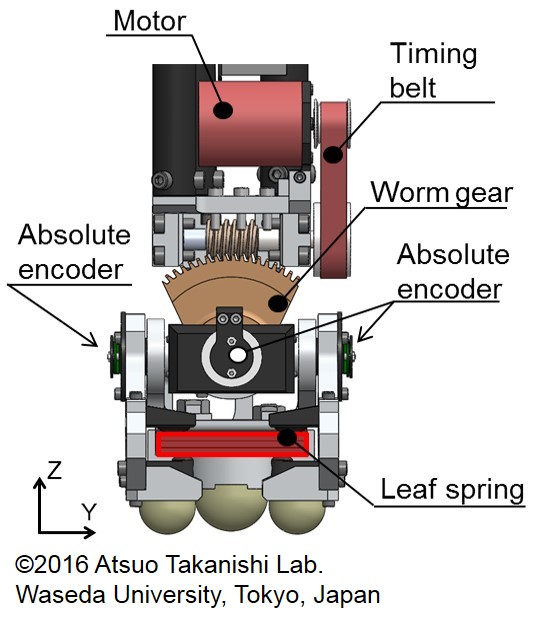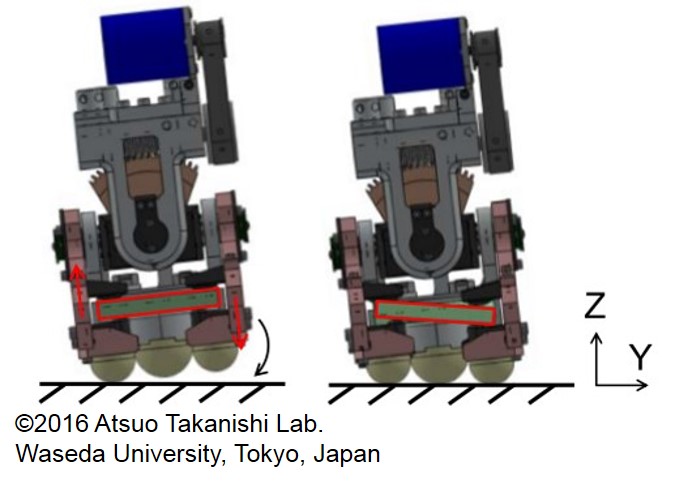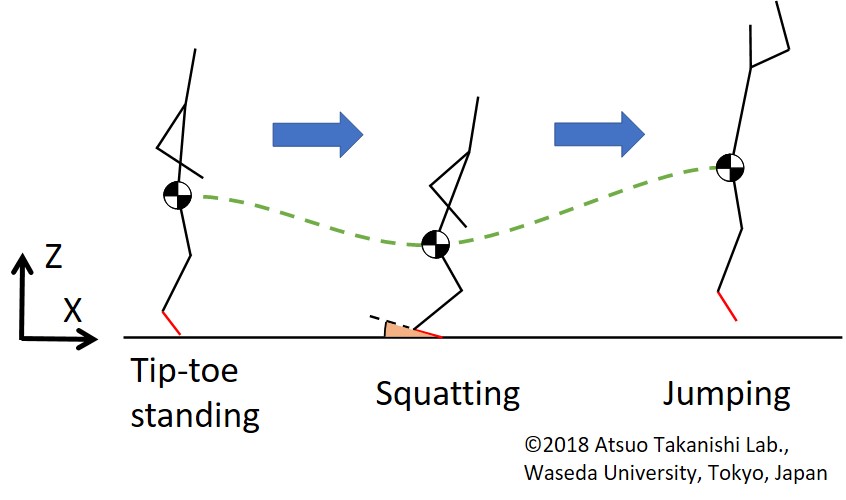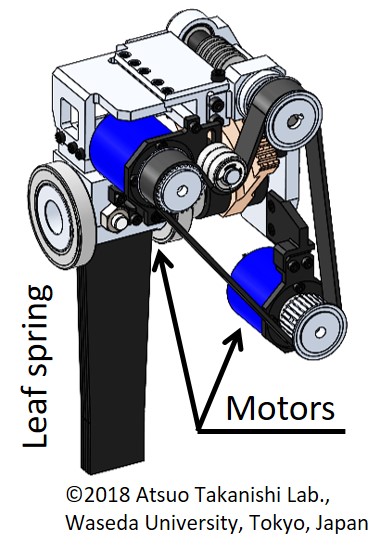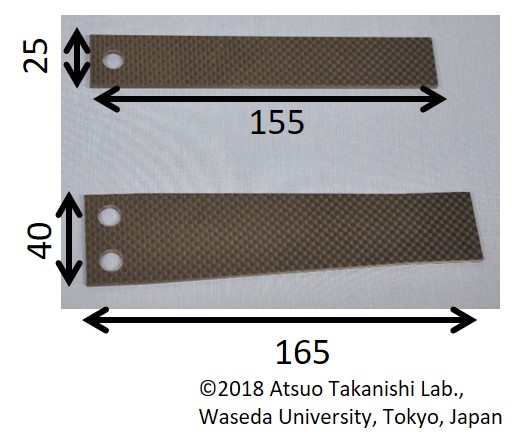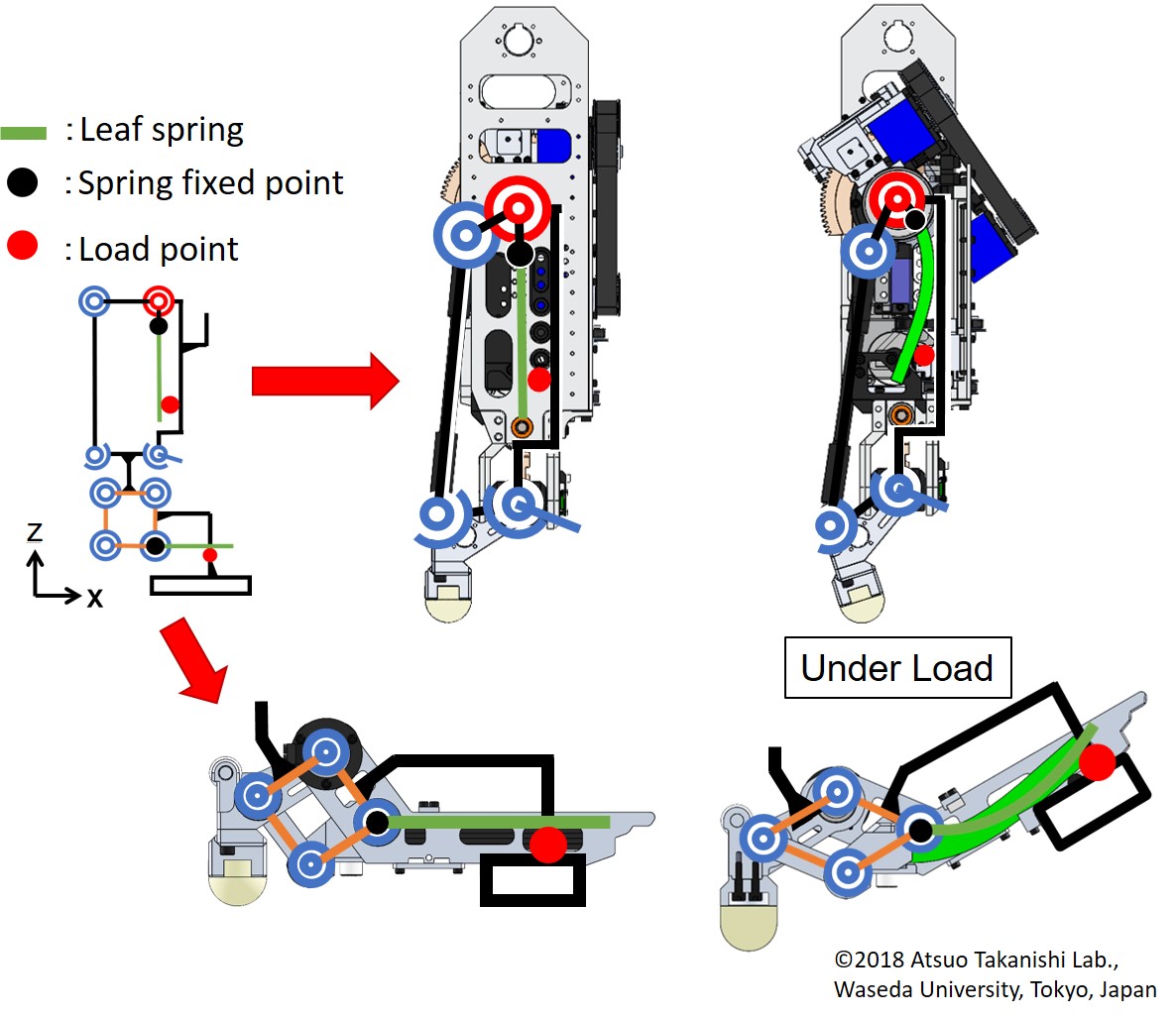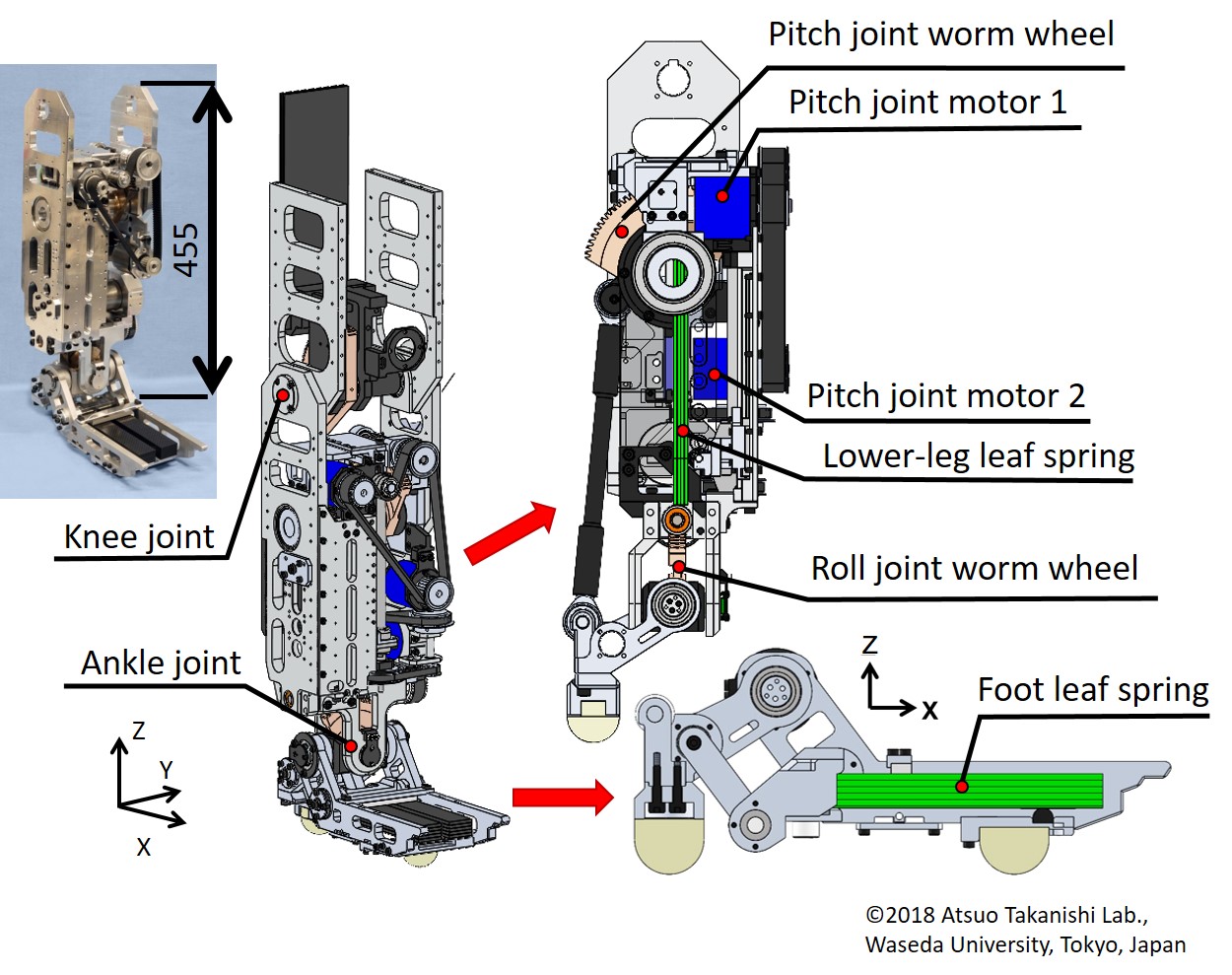|
In our previous researches, we have developed the joint mechanism that mimics human's joint stiffness and can output torques as high as those generated during human running. However, the mechanism does not mimic the joint stiffness needed for low-speed running of human.
In this study, we developed a new joint mechanism that has a wide joint stifness range which corresponds to the stifness range between low and high speed running, and can change its joint stifness between the minimum value and the maximum value during the flight phase. At first, we determined the requirements of the joint mechanism based on the previous studies in sports sciences. About the joint stiffness for running, the minimum requirement is 320[Nm/rad] which corresponds to running at a speed of 2.0[m/s], and the maximum requirement is 790[Nm/rad] which corresponds to running at 6.6[m/s]. Moreover, if the joint could increase its stiffness as high as that needed for conventional walking, the mechanism could be used not only for running, but also for walking. Therefore, we determined the maximum requirement of the joint stiffness as 3000[Nm/rad] on the basis of the hip roll joint stiffness of WABIAN-2R.
For achieving these requirements, a trapozoidal laminated CFRP leaf spring is implemented in place of a rectangular laminated CFRP leaf spring for decreasing the minimum joint stiffness (Fig. 23). To change the effective length of the leaf spring to be able to attain the maximum joint stiffness, a system to change the position of the fixed point instead of the loading point of the leaf spring was implemented. To move the fixed point, a ball screw and a heavy duty linear guide are implemented in the joint (Fig. 24). From the evaluation experiment with the developed mechanism, it is confirmed that the developed mechanism fulfills the requirements about the range of joint stiffness, torque capacity, and changing speed of joint stiffness.
We plan to implement the mechanism into WATHLETE-1 and realize a transition between low-speed and high-speed running.
|
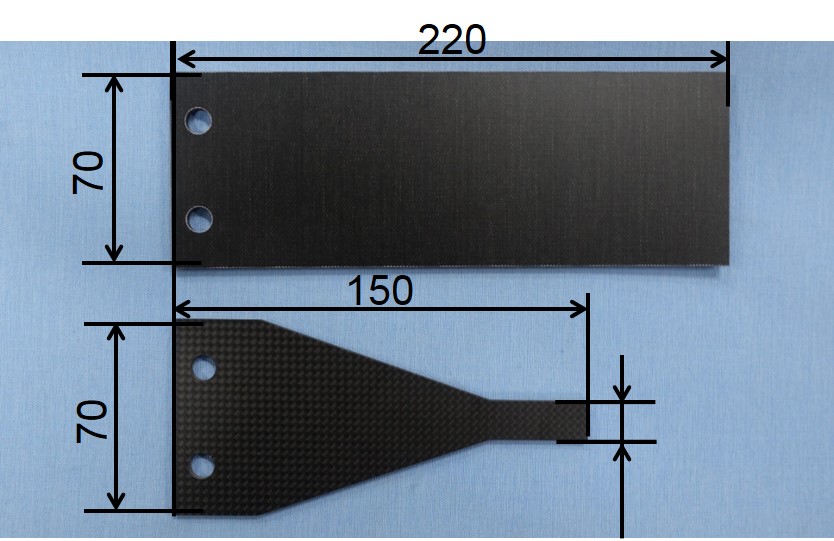
Fig. 23 Rectangular leaf spring and trapezoidal leaf spring
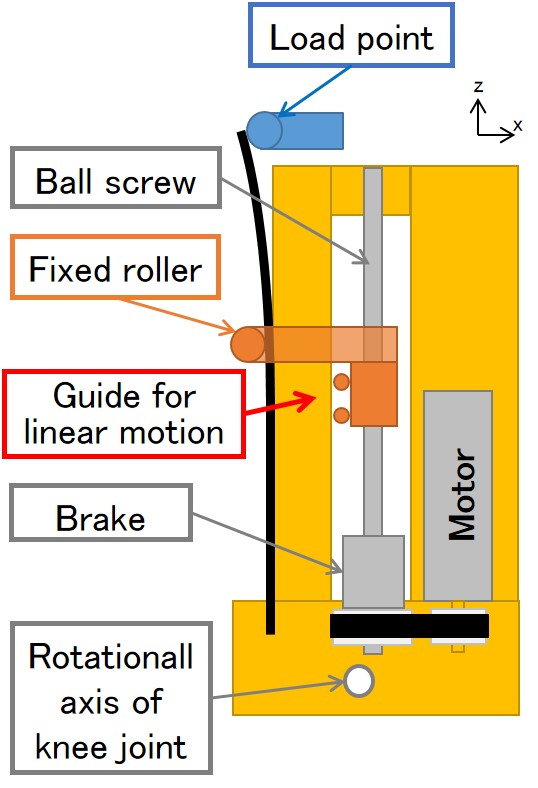
Fig. 24 Variable joint stiffness mechanism with the system to move the fixed point of the leaf spring
|
